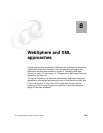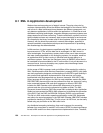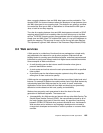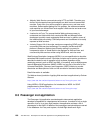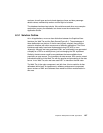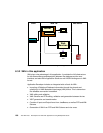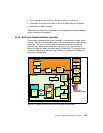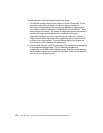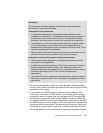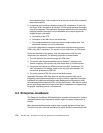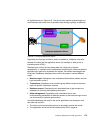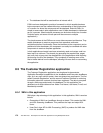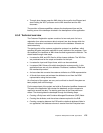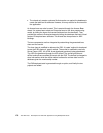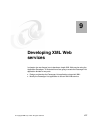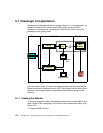
Chapter 8. WebSphere and XML approaches 171
3. The Data Access Definition (DAD) file is then generated. While generating
this file, a test harness can also be generated. We will use this to unit test the
application until this stage.
4. A new project, the TRAVEL project is created to hold the Web service’s
functionality. The project is a J2EE project. As a first step, a Web services
configuration group is created. After we have copied the DTD and the DAD
into the group, we generate a Data Access Definition eXtention (DADX) file.
The resulting file will have to be customized with the parameters for the flight.
5. The DADX file then serves as a base for the construction of our Web services
through the Web services wizard. This Web service is based on a Java proxy.
The wizard also has the option to generate a Web Services Object Runtime
Framework (WORF) run-time component to dynamically generate a test and
Discussion:
The advantages and disadvantages of establishing relational database
relationships in Application Developer:
Advantages of using the database:
For application development, relationships between tables are best
established in the database. The tables are shared by many applications,
and therefore is their common point. When a new application is being
developed, the
relationship have already being established for the application.
The database is a tried and tested product where joins, triggers, indexes,
etc. are commonplace. These are the forte of any database. Using a
database offers advantages in terms of scalability and performance. This is
important especially for large databases.
XML documents need to be parsed every time they are accessed and the
parsed file must be memory resident during query processing.
Advantages of using the DTD approach in Application Developer
This could be the best approach if the relationships between the tables
were specific to this application.
In e-Business information exchange, DTDs are a common point between
different companies intending to share data. Database schemas and
database relationships are proprietary to an organization and are used for
commercial advantage.This DTD can now be shared between
organizations.
The shared DTD can be agreed to by the organizations, and then using the
XML tools, map parts or all of DTD to the tables in the databases of each
organization.



